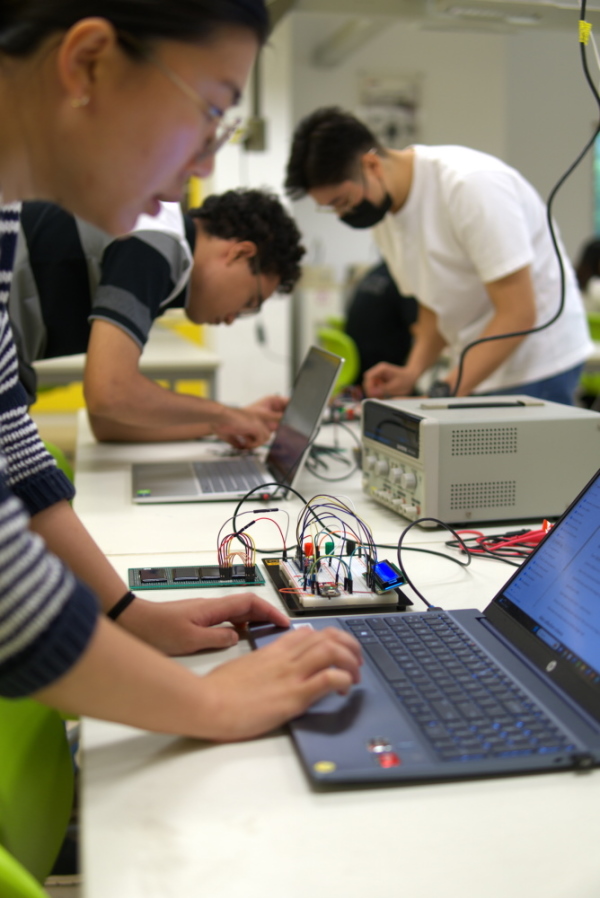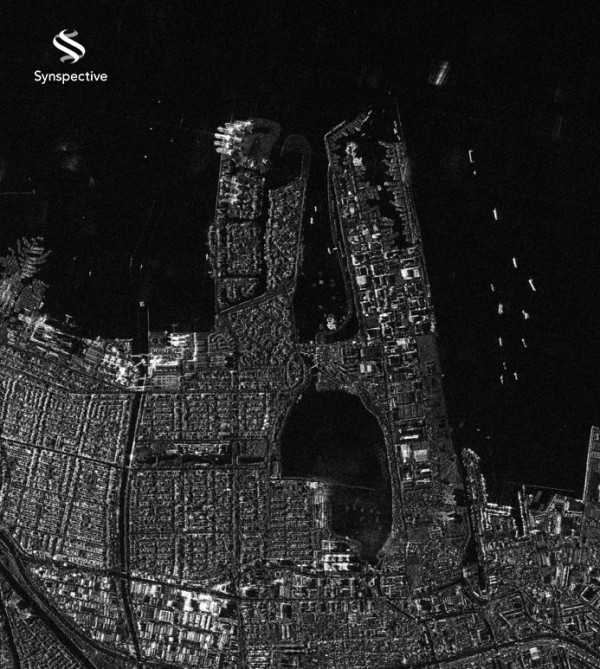By Lynette Tan, Chairwoman and CEO, Space Faculty Private Limited
Dynamic Growth in Asia
 Asia is rapidly establishing itself as a critical region in the global space economy, marking a significant shift in the industry's landscape.1 This transformation is propelled by substantial government backing, increased engagement from the private sector, and a wave of technological innovation across the continent.1 The sheer volume of space-related activities in Asia has witnessed a remarkable upswing, with the number of deals surging from 40 in 2020 to an impressive 130 by 2023, positioning Asia as the second-largest market globally, trailing only North America.2
Asia is rapidly establishing itself as a critical region in the global space economy, marking a significant shift in the industry's landscape.1 This transformation is propelled by substantial government backing, increased engagement from the private sector, and a wave of technological innovation across the continent.1 The sheer volume of space-related activities in Asia has witnessed a remarkable upswing, with the number of deals surging from 40 in 2020 to an impressive 130 by 2023, positioning Asia as the second-largest market globally, trailing only North America.2
Southeast Asia, home to dynamic ecosystems like Indonesia with over 2,400 startups and Singapore with its top-ranked startup scene, is emerging as a key driver of growth, benefiting from strong governmental support and strategic investments in the sector.2 The Asia-Pacific region is recognized as the global epicenter of aerospace innovation and market expansion, with the sector valued at US$87.66 billion in 2024 and projected to reach US$109.88 billion by 2029.4
Demands in Telecommunication Present Opportunities
The demand for advanced telecommunications infrastructure across Asia, particularly in regions with challenging geographical terrains and underserved populations, presents a significant opportunity for satellite-based solutions.5 Satellite technology offers a swift and effective means to bridge the digital divide, extending connectivity to remote areas where deploying terrestrial infrastructure proves difficult and costly.5 The advent of High-Throughput Satellites (HTS) has further revolutionized the landscape by enhancing both the capacity and affordability of satellite communications, leading to increased adoption throughout Asia. HTS plays a crucial role in expanding cellular backhaul capabilities for advanced mobile networks such as LTE and the forthcoming 5G, catering to the escalating demand for high-speed data services. Reflecting this growing reliance on satellite technology, the Asia-Pacific small satellite market, which includes satellite telecommunications, was estimated to be worth USD 3.11 billion in 2024 and is likely to grow to USD 7.28 billion by 2032, representing a CAGR of 11.2% from 2025 to 2032.2 The communication segment currently dominates this market, commanding approximately 95% of the market share in 2024, primarily driven by the immense communication needs of countries like China and India.5 The Asia-Pacific small satellite market is further projected to reach USD 17.8 billion in 2025 and USD 34.11 billion by 2030, growing at a CAGR of 13.89% during this period.5 Satellite internet operators in the Asia Pacific are estimated to generate over USD 1 billion in revenue in 2024, with a forecasted average annual growth rate of 50.2% through 2030.7 In 2023, the region had approximately 616,000 satellite broadband subscribers.7

Capacity Building Programmes on Spacecraft Design by Space Faculty
Credit: Space Faculty Private Limited

A Synthetic Aperture Radar (SAR) image showing the Tanjung Priok Port in Jakarta, Indonesia. It is provided by Synspective Inc., a company listed on the Japanese growth exchange. The image exemplifies how SAR technology can be used to continuously track ships in busy ports. Synspective uses its expanding high-frequency, high-resolution StriX SAR satellite constellation to provide detailed and reliable information.
Earth Observation is Another Growth Driver
Earth Observation (EO) satellites are also playing an increasingly indispensable role in addressing critical environmental challenges and enhancing disaster management capabilities, especially within the vulnerable Southeast Asian region.9 Globally, the EO market has a projected economic value of over $700 billion by 2030, with the Asia-Pacific region leading the charge, expected to grow by 184% to $315 billion by 2030.3 Nearly 80% of EO's total economic impact is forecasted to come from climate- and nature-related use cases.14 EO applications are being strategically employed for a multitude of purposes, including bolstering infrastructure resilience, monitoring power grids, and tracking climate change, particularly by island nations in the region.
Against this dynamic backdrop, Asian satellite operators are strategically capitalizing on emerging opportunities through the development of proprietary technologies. A notable example is Synspective Inc., publicly listed on the Tokyo Stock Exchange Growth Market. Their innovative satellite constellation is engineered to deliver near real-time data critical for disaster risk management and response. This capability is underpinned by impressive revisit rates, potentially achieving sub-30-minute intervals, coupled with the provision of high-resolution Synthetic Aperture Radar (SAR) imagery. This combination enables rapid and reliable damage assessment and facilitates effective support for emergency operations, irrespective of prevailing weather conditions.

Supporting Scientific Experiments in Space with JAXA
Credit: JAXA
Asia is rapidly cultivating a significant talent pool in deep technology, with a particular emphasis on artificial intelligence (AI) and data science, fields that are increasingly essential for the progress of the space sector.2 Southeast Asia has witnessed a remarkable tripling in the proportion of AI professionals between 2016 and 2024, with a compounded annual growth rate ranging from 5% to 17% across different countries in the region. The demand for AI expertise is surging throughout Asia, with a 2.4 times increase in job postings mentioning AI or GAI between 2021 and 2023, and a 1.7 times increase in applications for these roles.10 China's demand for AI professionals is expected to reach six million by 2030, but the domestic pool may only meet one-third of this need, leaving a shortage of approximately four million workers. Since 2016, the skills needed for jobs across Southeast Asian countries have changed by as much as 40%, and this is expected to accelerate to 72% by 2030 due to the adoption of GAI. An estimated 57% of workers (164 million) across Southeast Asia may be impacted by GAI.
Zooming in to a Singapore Company in Space
Singapore is strategically positioned as a pivotal hub within Asia’s expanding space economy. Leveraging its robust cultural and economic ties with China, India, and its Southeast Asian neighbours, Singapore serves as a trusted node bridging East and West.
Singaporean enterprise, Space Faculty Private Limited, is positioning itself to ride on the sector's global growth. Space Faculty delivers space training and education programmes and drives advancements through strategic partnerships, facilitating scientific experimentation, payload testing in space, and satellite launches for academic institutions. Its flagship initiative, the International Space Challenge (ISC), established in 2007, stands as a pioneering space competition with a strong international legacy with a robust track record of propelling young professionals into the global space industry. Numerous ISC alumni are now shaping the future of space, holding positions within leading space companies across Asia.16
Space Faculty also created Expand Space – a festival-styled event for capacity building and talent development – which was launched by Dr. Malik Osman from the Prime Minister’s Office. The inaugural event in 2024 was officiated by Minister for Manpower Dr. Tan See Leng and was attended by close to 100 institutions from 13 countries, including from Australia, China, India, Italy, Japan, Saudi Arabia, South Korea, and the Philippines.17

Lynette Tan presenting a certificate to a participant from South Korea for the International Space Challenge from at Expand Space 2024
Credit: Space Faculty Private Limited
Asia Offers a Dynamic and Expanding Market for Space
Asia offers a dynamic and rapidly expanding market for space-related businesses, presenting considerable opportunities across various segments, including satellite manufacturing, launch services, and downstream applications.3 China’s commercial space sector, in particular, is experiencing extraordinary growth, with its market value projected to exceed US$900 billion by 2029, up from an estimated US$320 billion in 2024.22 Between 2015 and 2021, China’s commercial space industry grew at an annual rate of 22.3 percent, with over 430 commercial space enterprises operating by the end of 2022.22 The number of satellite launches in Asia saw a 70 percent increase between 2018 and 2023.23 Japan’s space industry is currently valued at approximately JPY 1.2 trillion (around $8.6 billion), with the government planning to invest 1 trillion yen over ten years through the Space Strategy Fund.
However, operating within the Asian space sector also entails navigating unique challenges, such as intricate regulatory landscapes, varying degrees of governmental influence, and geopolitical considerations. The absence of a comprehensive legal framework for commercial space activities in some Asian countries, including China, can introduce uncertainties for businesses.23 Moreover, geopolitical rivalries within the region can create obstacles to seamless cross-border collaborations and market access.
In conclusion, Asia’s burgeoning space sector, fueled by technological advancements, strategic investments, and a growing pool of skilled professionals, is rapidly solidifying its role as a cornerstone of the global space economy.2 While effectively navigating the region’s specific challenges is paramount, the vast opportunities presented in areas such as telecommunications, Earth observation, and deep technology position Asia as a key driver of innovation and progress in the evolving space landscape.2
Works cited
- Asia's Aerospace Industry: A Growing Power in the Global Space Economy, accessed April 17, 2025, https://www.thailand-business-news.com/tech/196948-asias-aerospace-industry-a-growing-power-in-the-global-space-economy
- Space to Thrive: Deloitte-SSTL Report Says Increased Adoption of Earth Observation Data Across the Region Could Contribute an Additional $100 Billion to Southeast Asia's GDP by 2030, accessed April 17, 2025, https://www2.deloitte.com/sg/en/pages/about-deloitte/articles/space-to-thrive-deloitte-sstl-report-says-increased-adoption-of-earth-observation-data-across-the-region-could-contribute-an-additional-100-billion-to-southeast-asias-gdp-by-2030.html
- The Rise of Asia and the Middle East as Global Powers in Space ..., accessed April 17, 2025, https://interactive.satellitetoday.com/via/january-february-2025/the-rise-of-asia-and-the-middle-east-as-global-powers-in-space
- We need a skills-based approach to harness the AI opportunity in ..., accessed April 17, 2025, https://economicgraph.linkedin.com/blog/we-need-a-skills-based-approach-to-harness-the-AI-opportunity-in-southeastsia
- Cellular Backhaul in Asia: Telcos Embrace Satellite - Via Satellite, accessed April 17, 2025, https://interactive.satellitetoday.com/via/articles/cellular-backhaul-in-asia-telcos-embrace-satellite
- Asia-Pacific Small Satellite Market Size, Share, Trends & Forecast, accessed April 17, 2025, https://www.verifiedmarketresearch.com/product/asia-pacific-small-satellite-market/
- journals.ametsoc.org, accessed April 17, 2025, https://journals.ametsoc.org/view/journals/bams/100/6/bams-d-18-0342.1.pdf
- Climate Data Records in Action: Use Cases of Earth Observation Aiding Decision-Making | UNFCCC, accessed April 17, 2025, https://unfccc.int/sites/default/files/resource/Earth%20Information%20Day%202021%20Climate%20Data%20Records%20in%20Action%20Use%20Cases%20of%20Earth%20Observation%20Aiding%20Decision-Making.pdf
- Eyes in the Sky: How Earth Observation is Revolutionizing Climate ..., accessed April 17, 2025, https://www.cleantech.com/eyes-in-the-sky-how-earth-observation-is-revolutionizing-climate-action/
- GEO-DARMA | CEOS - Committee on Earth Observation Satellites, accessed April 17, 2025, https://ceos.org/ourwork/workinggroups/disasters/wgdisasters-activities/geo-darma/
- Empowering ASEAN Disaster Management with Copernicus Data ..., accessed April 17, 2025, https://d4dhub.eu/news/empowering-asean-disaster-management-with-copernicus-data-highlights-from-the-d4d-hub-at-apmcdrr
- Capacitating Southeast Asia through the use of Geospatial Technology and Earth Observation Data for Improved Decision-Making, accessed April 17, 2025, https://fig.net/resources/proceedings/fig_proceedings/nepal/ppt/ps02/PS02_dutta_12925_ppt.pdf
- GSTCE 2025 - Southeast Asia's Space Sector Poised for $100B GDP Boost, accessed April 17, 2025, https://spacewatch.global/2025/03/gstce-2025-southeast-asias-space-sector-poised-for-100b-gdp-boost/
- Understanding How AI Impacts Jobs and Skills in ASEAN - Access Partnership, accessed April 17, 2025, https://accesspartnership.com/understanding-how-ai-impacts-jobs-and-skills-in-asean/
- Singapore's Space Strategy Creates an Opportunity for Canada, accessed April 17, 2025, https://www.asiapacific.ca/publication/singapore-space-strategy-opportunities-for-canada
- Expand Space – A Deep Tech Playground to Spark Passion to Profession, accessed 17 April, 2025, https://www.expandspace.com
- About Us - Space Faculty, accessed April 17, 2025, https://spacefaculty.asia/about-us/
- China's Space Economy: Opportunities for Businesses and Investors, accessed April 17, 2025, https://www.china-briefing.com/news/chinas-opportunities-in-aerospace-and-commercial-space-industries/
- China's Push for a More Commercial Space Industry | June 2024, accessed April 17, 2025, https://interactive.satellitetoday.com/via/june-2024/chinas-push-for-a-more-commercial-space-industry
- GSTCE 2025 - Deloitte on Southeast Asia's $100B Space Opportunity & Connecting Industries - SpaceWatch.GLOBAL, accessed April 17, 2025, https://spacewatch.global/2025/03/gstce-2025-deloitte-on-southeast-asias-100b-space-opportunity-connecting-industries/
- Asia-Pacific Small Satellite Market Size & Share Analysis - Industry Research Report, accessed April 17, 2025, https://www.mordorintelligence.com/industry-reports/asia-pacific-small-satellite-market
- The Great Leap Forward of China's Private Space Industry – Synergy, accessed April 17, 2025, https://utsynergyjournal.org/2025/04/09/the-great-leap-forward-of-chinas-private-space-industry/
- China faces talent shortage amid DeepSeek-fuelled AI jobs surge ..., accessed April 17, 2025, https://asianews.network/china-faces-talent-shortage-amid-deepseek-fuelled-ai-jobs-surge/
